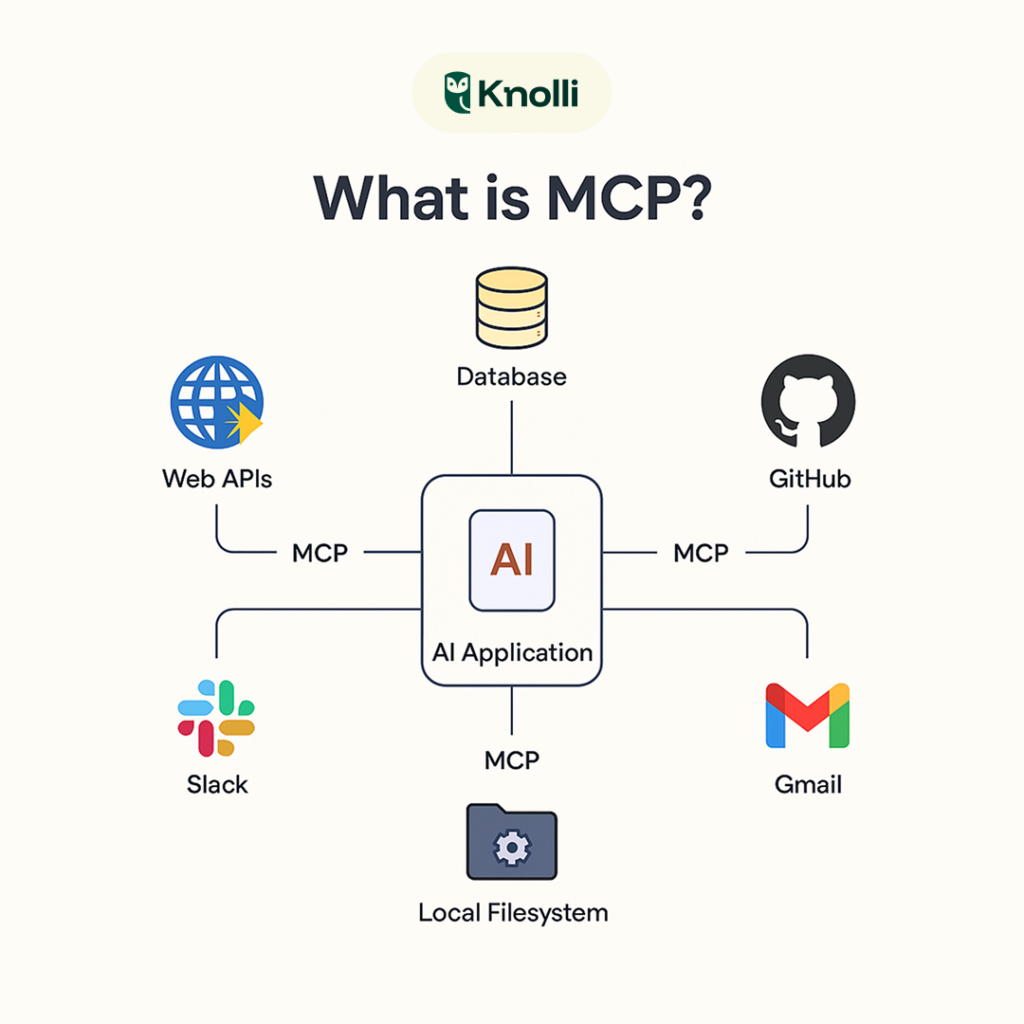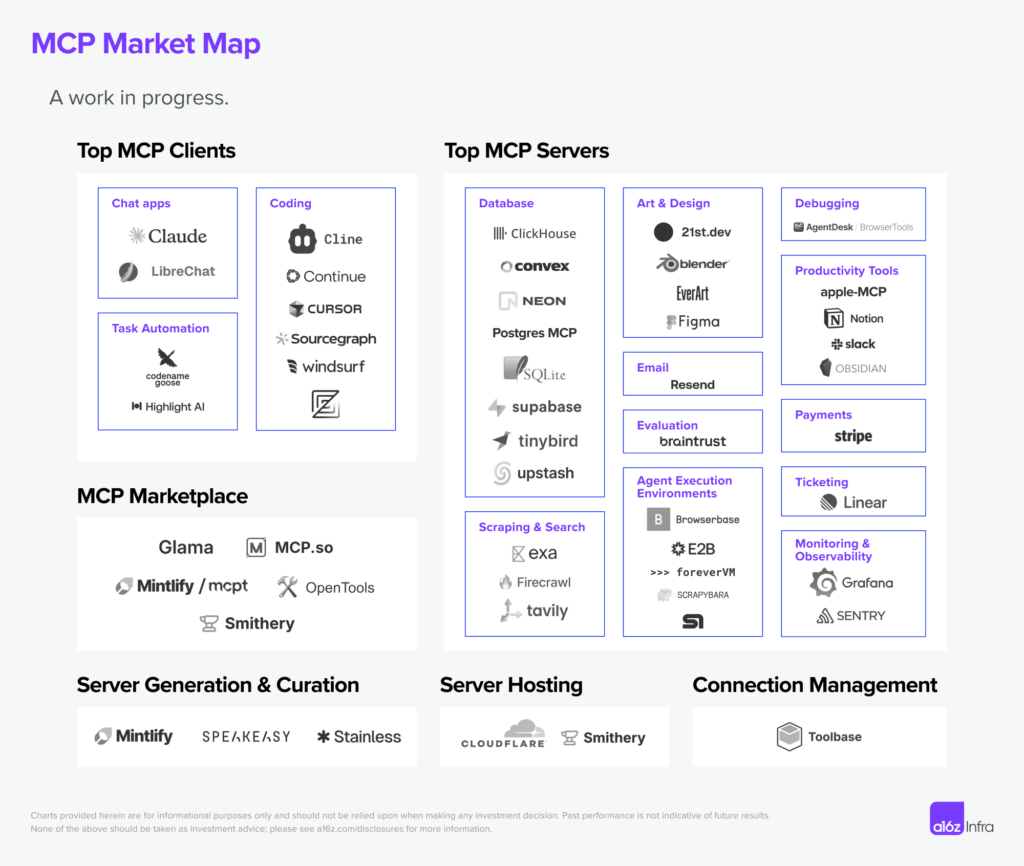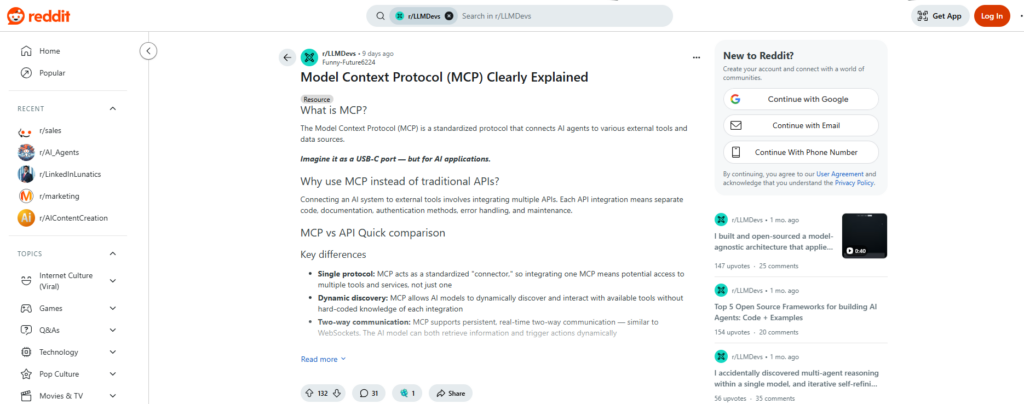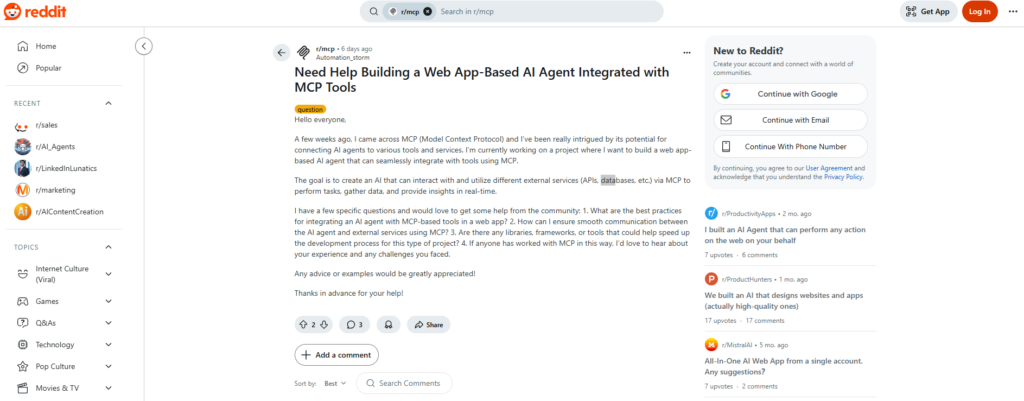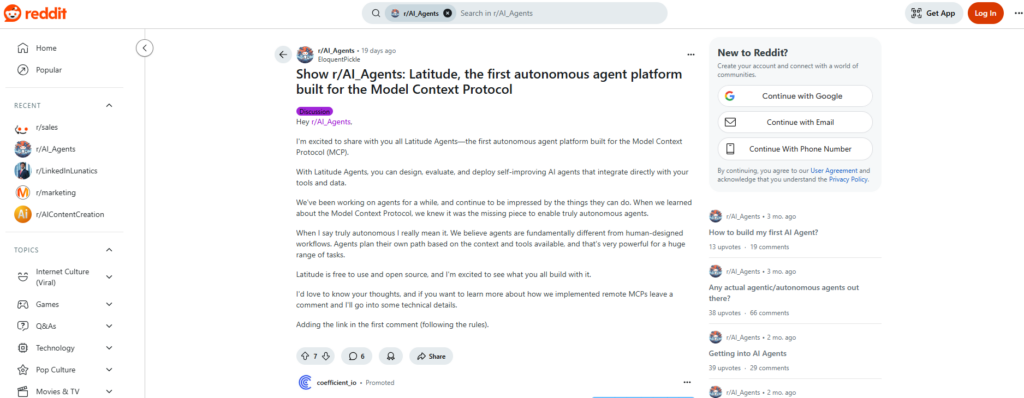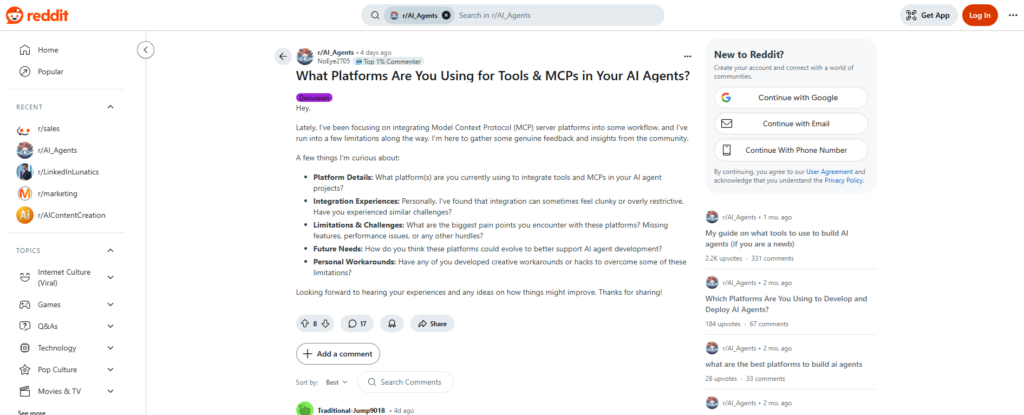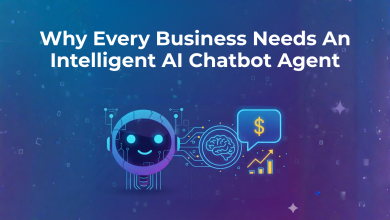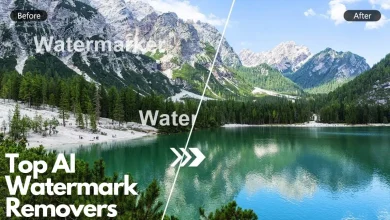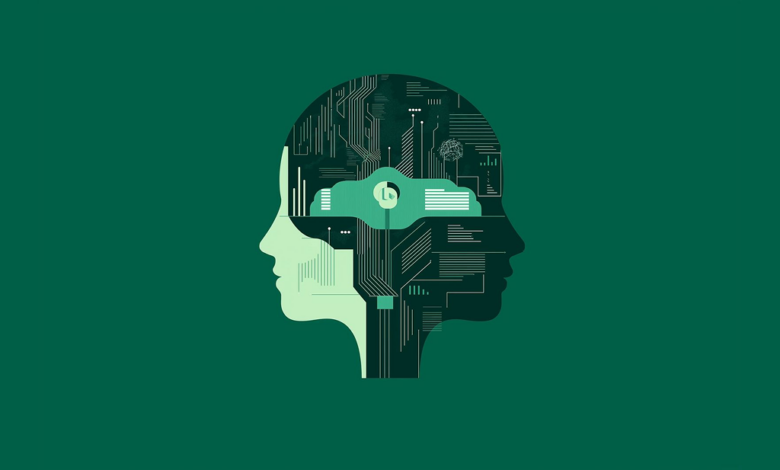
What if your AI system could securely, scalably, and with full contextual understanding access real-time data from any enterprise source?
Not just static files or one-off queries but real-time updates from CRMs, dashboards, emails, and whatever you use. What if that data did not need to be in the cloud?
That’s the idea behind the Model Context Protocol (MCP). It acts as a universal intermediator that connects AI systems to business tools.
Source: Introducing MCP Servers – Build Smart AI Agents
Instead of building one-off integrations for every app and AI model, MCP makes everything speak the same language.
See what’s the key:
- One language for everyone
- Build once, use anywhere
- Agents that actually team up
And it’s not just theory. Many companies are already doing it.
Microsoft has integrated MCP into its Copilot Studio to enable its users to add AI applications, tools, and agents without any help.
Also, Replit, Codeium, and Sourcegraph adopted MCP to provide users with access to real-world data and improve the capabilities of their AI agents overall.
Additionally, the chart below covers the early players using MCP and AI agents to solve real problems and make everyday work easier.
Source: Key Players of MCP and AI Agents
This highlights the growing impact of MCP. When AI agents receive and understand context, they will give you much better results.
What Are the Advantages of Integrating MCP into AI Agents?
MCP is a modular approach that lets you snap together different servers to develop custom AI agents that perform the exact tasks you need intelligently.
1. Easy Tool Integration Across AI Agents
Think of your AI agents like employees. To do their job well, they need access to calendars, CRMs, code, dashboards. The problem is, without a common “language,” each tool needs its own custom connection which is overwhelming.
MCP fixes that. It enables:
- Agents to chat with any tool that supports MCP.
- Developers only need to build something once and it’ll work with any agent.
- Multiple agents can work together without stepping on each other.
2. Real-Time Contextual Awareness
Traditional AI agents rely on pre-trained data or static memory, limiting their responsiveness to dynamic queries. MCP enables AI agents to:
- Pull real-time data from live enterprise systems
- Adjust task-specific metadata or context on-the-go
- They keep the conversation going without losing track of what’s happening
- Handle multi-turn, context-sensitive interactions with external APIs
This makes MCP-integrated AI agents capable of decision-making, problem-solving, and automation workflows across industries.
3. Reduced Latency in Action Execution
Ever asked a tool to do something and then waited for a long time? AI tools are often stuck going through too many middlemen to get the tasks done.
Well, MCP cuts the wait. It makes sure:
- AI tools respond quickly without any intermediary requirement
- Quick performance even with multi-step tasks
- Increased success rates while AI agents performing complex tasks
4. Better Security and Permission Handling
Security is vital when AI agents execute actions. MCP support:
- Only the authorized access to the right agents to the right tools
- No tasks are executed without permissions
- Every action is logged for improved transparency
This ensures that AI agents remain auditable, accountable, and compliant with enterprise-grade security frameworks.
How Does MCP Make AI Agents Actually Useful?
Software Development Agents
AI coding agents aren’t effective if they fail to see what’s happening in your pipeline. With MCP, they can:
- Talk directly to GitHub or GitLab
- Read docs without bothering your devs
- Check on CI/CD status—or even kick off a deploy
It means your AI agent goes from an analyzer to an actual assistant who can help fix and automate.
Enterprise Data Analyst
Data agents usually face challenges when company info is locked in 10 different places. MCP changes that by enabling AI agents to:
- Run queries on your BI tools, ERPs, or dashboards
- Pull numbers, charts, and summaries on demand
- Share info to a large language model for natural and understandable insights
As a result operations, financial, and marketing teams get answers fast without waiting for analysts to do it for them.
Customer Support and CRM Integration
Support teams equipped with MCP-powered agents can safely:
- Check support tickets in tools like Zendesk
- See a user’s account history
- Reset passwords or change orders without messing up
All actions are transparent and easy to track making customer service more secure and automated.
Cybersecurity and Compliance Bots
Security bots need structure and trust. MCP gives them both. They can:
- Pull logs from Splunk or Datadog
- Keep a check on policy violations
- Trigger alerts or actions based on real behavior
Real-World Examples of MCP in Action
MCP (Model Context Protocol) isn’t just tech for tech’s sake. It’s already helping real tools and AI systems
get smarter and more useful. Here are a few ways it’s showing up in the world:
1. Claude MCP – Giving AI Live Access to the Real-Time Data
Normally, AI models like Claude only know what they were trained on. That’s great until you raise a different query. Well, things change with Claude MCP.
Claude with MCP support helps you extract information in real time from APIs, databases, or even internal tools.
Say you ask Claude for the latest news in AI. With MCP, it can check live news sources, grab the most relevant info, and give you a fresh summary that’s actually current, not outdated like most models.
2. Cursor IDE – Your Upgraded Coding Assistant
Every developer can resonate with how it feels getting stuck between tabs, examples, docs, and the need to fix errors. Cursor IDE fixes that by using MCP right inside your code editor.
Cursor IDE uses MCP to see live documentation, pull in code examples, and recommend actionable changes.
For example, you’re working on a React app? Cursor IDE can check the latest syntax for your components, verify imports, and provide real-time updates.
3. Cline MCP – A Plug-and-Play Marketplace for AI Connections
Cline acts as a marketplace full of tools and services that already speak MCP, so your AI agents can quickly access them.
You no longer need to write custom code to connect to every API. You just browse Cline, pick a service (like a CRM or helpdesk), and connect.
Do you have a support chatbot? With Cline MCP, it can connect with platforms like HubSpot or Salesforce and instantly get customer data like ticket history or order information. Thus, providing more intelligent and relevant replies.
What the Internet Thinks: Community Opinions on MCP Integration into AI Agents
With the Model Context Protocol (MCP) becoming the buzzword, online communities are actively discussing its use in real projects. Developers are active on Forums like Reddit sharing how MCP is improving the way AI agents connect with tools and APIs.
1. Simplifying Tool Integration for Developers
In the r/LLMDevs subreddit, many developers say MCP helps simplify multi-tool connections.
Source: How MCP Works Explained
Developers no longer need to build new pipelines for every model-tool combo and save time and effort.
2. MCP in Real-World AI Agent Builds
In r/mcp, one user shared a project where they wanted to build a web-based AI agent that could make live phone calls and pull real-time data from APIs.
Source: MCP in Building Real-Time AI Agents
They said MCP made it easier to discover functions and use tools without needing a complex backend.
3. New Platforms Built on MCP
Over in r/AI_Agents, the launch of Latitude Agents, an MCP-native platform, generated buzz.
Source: MCP-Generated AI Platform
Developers liked that the platform allowed agents to query, reason, and act independently while using a standard setup for external tools.
Early Challenges and Growth Areas in Using MCP with AI Agents
Many developers are excited about using the Model Context Protocol (MCP) with AI agents. But some early challenges have come up.
Look at a Reddit thread titled “What platforms are you using for tools + MCPs in agents?” Users shared some of the common issues they’re facing.
Source: AI Agents + MCP
Here are a few key challenges:
- Setting up permissions
- Tool version updates
- Fixing tool call issues
These challenges are normal for any new system. As more developers use MCP and share what works, these early hassles are expected to get smoother over time.
Now’s a Good Time to Start Using MCP and AI Agents
AI agents powered by MCP aren’t just the buzz now. They’ve been already helping teams get more done with less effort.
Here’s what you get:
- Reduced repetitive tasks and more time for productivity
- Quick AI tools and API connectivity
- Safe, permission-based data access
- Real-time help for remote teams
- Affordability with better workflows
Knolli now supports MCP integration. Sign up with Knolli to easily connect your apps and tools using the Model Context Protocol and experience smart workflows, quick automation, and better control all in one place.

